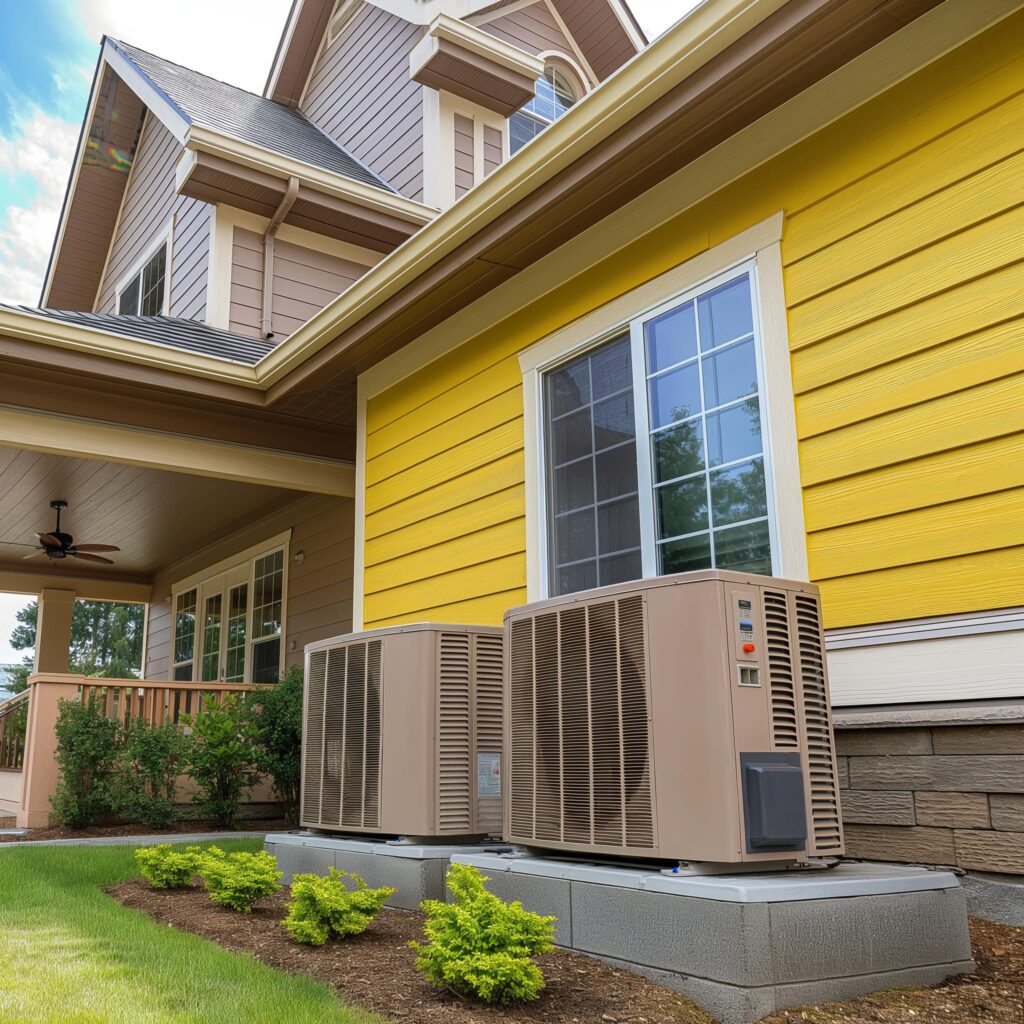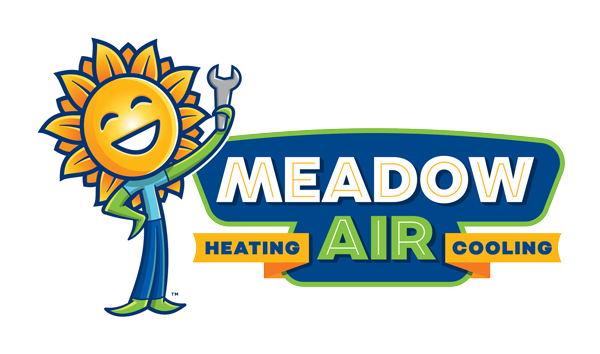What is HVAC?
You’ve probably heard the term “HVAC” tossed around and maybe even have a pretty good idea of what it refers to. But let’s dig a little deeper, shall we? What exactly is HVAC, and why does it matter to your home or office?
Key Takeaways
- HVAC stands for Heating, Ventilation, and Air Conditioning. These systems are essential for controlling the temperature, humidity, and overall air quality in residential, commercial, and industrial buildings, making indoor environments comfortable and livable.
- HVAC has various components, and each one has a specific role, whether it’s heating, cooling, moving air, or regulating the system’s operations.
- Modern HVAC systems emphasize energy efficiency, with devices like high-efficiency furnaces and heat pumps that can significantly reduce energy consumption compared to older models.
- There are different types of HVAC systems, and these include split systems, packaged systems, central air conditioning, ductless systems,
- Regular maintenance, including changing air filters, cleaning debris from outdoor units, and professional check-ups, is essential for the efficient operation and longevity of HVAC systems.
- Choosing the right HVAC system involves considering factors like system size, type, and efficiency ratings (SEER and HSPF).

What Does HVAC Stand For?
HVAC stands for heating, ventilation, and air conditioning. These systems are designed to control the temperature, humidity, and air quality in buildings. Whether it’s in homes, offices, or massive skyscrapers, HVAC systems are there to ensure comfort.
They provide heating on cold days and cooling on hot days, and keep moisture and allergens under control year-round. These systems have become an essential part of modern architecture, allowing us to live and work comfortably indoors.
Components of HVAC Systems and Their Roles
The main components of an HVAC system include:
- Furnace: The furnace provides heating by burning fuel like natural gas, propane, or oil. It converts this fuel into heat, which is distributed through ductwork and vents. Modern high-efficiency furnaces can reach efficiencies of over 90%.
- Heat Pump: Heat pumps provide both heating and cooling. In heating mode, they extract heat from outdoor air and pump it indoors. In cooling mode, they extract heat from indoors and pump it outside. Heat pumps are powered by electricity and are more energy efficient than furnaces.
- Air Conditioner: Air conditioners provide cooling by removing heat from indoor air and releasing it outdoors. This works through a refrigeration cycle involving a compressor, condenser coils, and evaporator coils.
- Air Handler: The air handler contains a blower that circulates air through ductwork and vents. It works with the furnace or heat pump to distribute heated or cooled air. Some systems combine the furnace, heat pump, or air conditioner into the air handler unit.
- Thermostat: The thermostat allows users to control the temperature. It signals the HVAC system to turn on heating or cooling to reach the desired temperature. Some thermostats can be programmed with schedules.
- Ductwork: Ductwork distributes the conditioned air from the HVAC system to different areas of the building. Ducts come in two types: supply and return. The supply ducts distribute heated or cooled air, and the return ducts bring indoor air back to the system.
- Vents/Registers: Vents (or registers) allow the conditioned air to enter each room. Equipped with dampers, the vents can be adjusted to control the flow of air.
Other components, like humidifiers, dehumidifiers, and air cleaners, can be added to regulate humidity and filter indoor air. The components work together to provide heating, cooling, ventilation, humidification, dehumidification, and air filtration.
How HVAC Systems Work
HVAC systems use a few key principles to heat and cool indoor air. Understanding these principles provides insight into how HVAC works and why proper installation and maintenance are important.
Refrigeration Cycle
The refrigeration cycle is at the heart of HVAC cooling. It involves cycling refrigerant between gas and liquid states to absorb and release heat. The main components involved are a compressor, condenser, expansion valve, and evaporator.
The refrigerant starts as a low-pressure gas, which the compressor pressurizes into a hot, high-pressure gas. It then condenses into a liquid in the condenser while releasing heat outside.
The liquid refrigerant passes through the expansion valve and becomes cold, low-pressure liquid. As it evaporates in the evaporator, it absorbs heat from indoor air blown across the coils. This cooled air is then circulated throughout the building.
Heat Transfer
HVAC systems manage indoor temperatures by transferring heat between the indoors and outdoors through conduction, convection, and radiation. Here’s how each method works:
- Conduction: This process involves the direct transfer of heat through a solid or fluid that is in contact with another material. For instance, metallic ductwork conducts heat from the HVAC equipment to various spaces within a building.
- Convection: Heat is transferred via the movement of liquids or gases. In HVAC systems, this can occur when refrigerant circulates or when air is blown across hot or cold coils, effectively distributing the heated or cooled air throughout the space.
- Radiation: This method transfers heat through electromagnetic waves. An example within HVAC systems is the radiation from a furnace’s heat exchanger to the air around it.
By optimizing these methods of heat transfer, HVAC systems effectively provide heating or cooling to maintain comfortable indoor environments.
Moving Air
An HVAC system uses fans and ductwork to move conditioned air throughout a building. The setup consists of two types of ducts: supply and return.
Supply ducts deliver cooled or heated air into rooms, ensuring that each space reaches your desired temperature. On the other hand, return ducts pull the air back to the HVAC unit for reconditioning.
The system uses variable speed motors and dampers to precisely control the airflow, allowing for efficient and effective air distribution. This controlled process helps maintain a consistent and comfortable indoor climate.
Controlling Temperature & Humidity
HVAC systems have automatic controls to maintain a building’s temperature and humidity. These include:
- Thermostats: These gadgets check the room temperature. If it gets too cold or hot, they turn on the heating or cooling to make it right.
- Humidistats: These are similar to thermostats, but they check how wet or dry the air feels. They adjust things to make sure the air isn’t too damp or too dry.
Everything works automatically to save energy and keep you comfortable. If your building has different areas (or “zones”), each can have its own thermostat. This means you can set different temperatures for each area.
Plus, with special programmable or “smart” thermostats, you can set up a schedule to change the temperature at different times, like cooler when you’re not there and warmer when you are. It’s a clever way to save on your energy bills and still be comfy.
Types of HVAC Systems
There are several main types of HVAC systems used for heating and cooling homes and buildings, and they include:
Split Systems
Split system air conditioners consist of two main components: an outdoor unit containing the condenser and compressor and an indoor air handling unit. The compressor circulates refrigerant between the two units, facilitating the heat exchange process.
The most common types of split systems include:
- Split Ductless Systems: These feature an outdoor condenser connected to one or more indoor units, typically wall-mounted or ceiling-mounted, that contain the evaporator. This setup eliminates the need for ductwork, making installation simpler and more flexible.
- Split Ducted Systems: These systems pair an outdoor unit with an indoor air handler that distributes conditioned air through a network of ducts. This allows for centralized control and uniform air distribution throughout larger spaces.
Packaged Systems
Packaged HVAC systems combine the evaporator, condenser, and compressor into a single outdoor cabinet. This compact, all-in-one unit is then connected to the building’s ductwork to distribute conditioned air.
Typically placed on rooftops or beside buildings on the ground, these systems are especially popular in commercial settings due to their efficiency and space-saving design.
Central Air Conditioning
Central air conditioning systems feature an outdoor condenser and compressor paired with an indoor evaporator coil and either a furnace or air handler.
The evaporator coil is connected to the building’s ductwork, which distributes cool air throughout the space. This ducted setup allows for efficient whole-home or building cooling from a single, centralized unit.
Ductless Systems
Ductless mini-split systems have an outdoor compressor/condenser connected to one or more indoor units, which can be mounted on walls or ceilings. Refrigerant lines link these indoor units to the outdoor unit.
Unlike traditional systems that use ductwork, ductless systems deliver conditioned air directly into each room. This setup enables individual temperature control in different zones or rooms, allowing for customized comfort and enhanced energy efficiency.
Choosing the Right HVAC System
Choosing the right HVAC system for your home is an important decision that requires careful consideration. Here are some key factors to take into account:
- Efficiency Ratings: Look for systems with high SEER (Seasonal Energy Efficiency Ratio) and HSPF (Heating Seasonal Performance Factor) ratings to ensure energy cost savings.
- Size of the System: An appropriately sized HVAC system is vital. Oversized or undersized systems can lead to inefficiency and increased wear.
- Type of HVAC System: Decide between split systems, packaged units, or ductless mini-splits based on your home’s layout and existing infrastructure.
- Cost Considerations: Factor in both the upfront cost and the long-term operational costs. Investing in a more efficient system can yield cost savings over time.
Why Choose Meadow Air?
At Meadow Air, we understand the importance of a reliable and efficient HVAC system. Our team of experts is committed to providing top-quality installation, maintenance, and service to ensure your comfort and satisfaction.
Choose us for your HVAC needs and experience the peace of mind that comes with a professionally managed indoor climate.
Contact us today to learn more about our services and how we can help you achieve the perfect environment for your home or business.
Frequently Asked Questions
What Is the Difference Between HVAC and AC?
“AC” which stands for air conditioning, typically refers just to cooling the air in your space. “HVAC covers a broader spectrum, including heating, cooling, and the maintenance of indoor air quality. In other words, HVAC systems are more comprehensive and can handle a variety of air management tasks.
How Do You Maintain an HVAC System?
Maintaining an HVAC system is all about regular checks and balances. You’ll want to change the air filters every few months, keep the outdoor units clear of debris, and schedule professional maintenance at least once a year. This helps in making sure your system runs efficiently and can prevent costly repairs down the line.
Is HVAC Expensive?
The cost of an HVAC system can vary widely based on factors like the size of your space, the type of system you choose, and the complexity of the installation. While the upfront cost can be significant, investing in an energy-efficient model can save you money in the long run through reduced utility bills.
